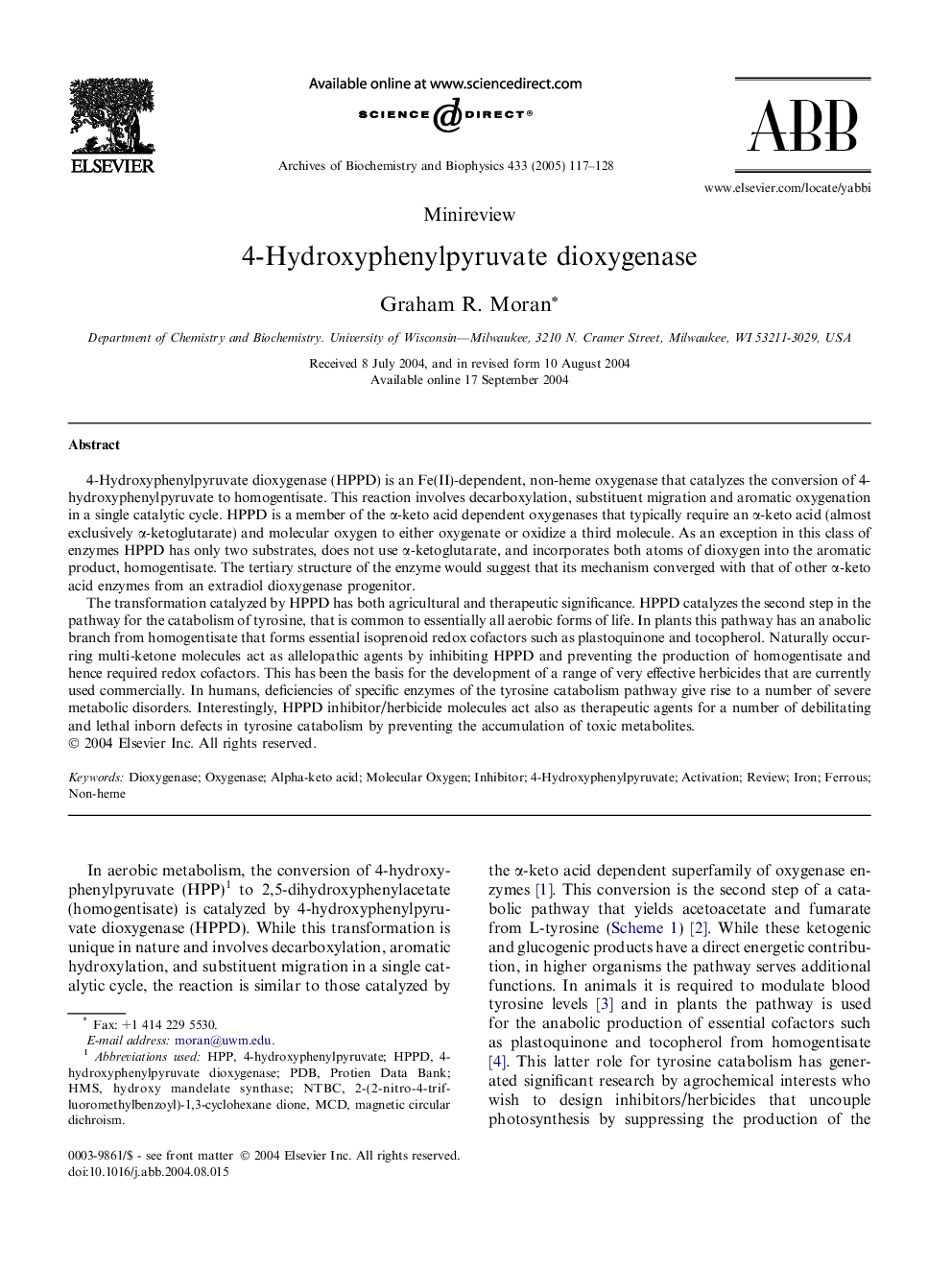| Article ID | Journal | Published Year | Pages | File Type |
|---|---|---|---|---|
| 9882410 | Archives of Biochemistry and Biophysics | 2005 | 12 Pages |
Abstract
The transformation catalyzed by HPPD has both agricultural and therapeutic significance. HPPD catalyzes the second step in the pathway for the catabolism of tyrosine, that is common to essentially all aerobic forms of life. In plants this pathway has an anabolic branch from homogentisate that forms essential isoprenoid redox cofactors such as plastoquinone and tocopherol. Naturally occurring multi-ketone molecules act as allelopathic agents by inhibiting HPPD and preventing the production of homogentisate and hence required redox cofactors. This has been the basis for the development of a range of very effective herbicides that are currently used commercially. In humans, deficiencies of specific enzymes of the tyrosine catabolism pathway give rise to a number of severe metabolic disorders. Interestingly, HPPD inhibitor/herbicide molecules act also as therapeutic agents for a number of debilitating and lethal inborn defects in tyrosine catabolism by preventing the accumulation of toxic metabolites.
Keywords
Related Topics
Life Sciences
Biochemistry, Genetics and Molecular Biology
Biochemistry
Authors
Graham R. Moran,
